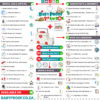Implement Proven Strategies for Urban Fire Escape Plans to Ensure Safety and Preparedness
Identifying and Evaluating Fire Hazards in Densely Populated Areas

Urban environments pose a multitude of distinct challenges concerning fire safety. The high population density, the close arrangement of buildings, and the presence of various combustible materials significantly increase the likelihood of fire incidents. Fires in urban areas can spread at an alarming rate compared to rural settings, underlining the necessity for residents to stay alert regarding potential dangers. Factors including outdated construction materials, insufficient fire breaks, and limited access for emergency responders further heighten these risks. Moreover, urban settings host a variety of businesses, each contributing unique fire hazards, from bustling commercial kitchens to heavy industrial equipment.
Additionally, the presence of tall buildings complicates fire escape strategies. While these structures are typically equipped with various fire safety features, their height can obstruct effective evacuation routes. The abundance of flammable materials usually found in urban residences, such as furniture and electronics, can accelerate the fire’s spread significantly. Understanding these risks is crucial for formulating urban fire escape plans that prioritize safety and preparedness, ensuring that all residents are adequately equipped to respond effectively in the face of a fire emergency.
The Essential Importance of a Comprehensive Fire Escape Strategy
A well-defined fire escape strategy is critical for protecting lives in urban residential settings. A clearly outlined plan equips residents with the knowledge and tools necessary to respond promptly during a fire emergency, significantly enhancing their survival chances. In the absence of a carefully organized plan, panic can swiftly ensue, leading to chaos and confusion that can have disastrous consequences in high-stakes situations.
An effective urban fire escape plan must include clearly designated escape routes and well-established safe meeting points outside the building for all residents. It is vital that the plan accommodates various mobility levels, ensuring that children, seniors, and individuals with disabilities have tailored strategies suited to their specific needs. Regularly reviewing and practicing the escape plan is critical; this reinforces its importance and guarantees that every family member, including pets, comprehends the necessary actions to take during an emergency.
Navigating the Legal Responsibilities and Fire Safety Regulations
Understanding the legal responsibilities and building codes associated with fire safety is essential for urban dwellers. Numerous cities enforce strict regulations concerning crucial fire safety equipment, including smoke detectors, fire extinguishers, and sprinkler systems. Familiarity with these regulations is not solely about compliance; it plays a fundamental role in personal safety and the overall well-being of the community.
Building codes typically specify the required number and types of exits within residential structures and outline construction materials meant to reduce fire hazards. Residents should proactively engage with local fire departments or building management to ensure that their homes comply with these safety standards. Awareness of these regulations empowers residents to advocate for necessary upgrades or enhancements within their buildings, ultimately contributing to a safer living environment for everyone involved.
Developing Your Comprehensive Urban Fire Escape Strategy

Creating an Accurate Home Floor Plan to Enhance Safety Measures
Creating a precise floor plan is crucial for establishing effective urban fire escape plans. Start by sketching a detailed layout of your home, clearly indicating all exits, windows, and potential fire hazards. This visual reference will prove invaluable during emergencies, allowing residents to quickly assess their escape options and make informed decisions.
When drafting your home layout, it is essential to pinpoint the most efficient escape routes. Identify the fastest paths to exits and ensure those routes remain clear at all times. Regularly reviewing and updating this floor plan is vital to reflect any changes in your living situation, such as new furniture arrangements or renovations. Moreover, discussing the plan with every household member ensures that everyone understands the layout and their respective responsibilities during emergencies, fostering a shared sense of accountability and cooperation.
Establishing Multiple Exit Strategies to Enhance Safety
Incorporating various escape routes is vital for effective fire safety planning in urban areas. Many buildings in densely populated settings may primarily feature a single main exit, which could become blocked or compromised during a fire emergency. Therefore, identifying additional exits is essential to ensure that all residents can evacuate safely and efficiently.
Exits should consist of doors and accessible windows that can effectively serve as alternative escape routes. It is crucial to verify that these exits are easily operable and accessible to all residents. Regularly practicing the use of these alternate exits can help familiarize residents with their escape options, minimizing panic during a genuine emergency. Additionally, fostering communication with neighbors regarding potential exits can create a sense of community support, enhancing overall safety in the area during a fire event.
Confronting Unique Challenges in High-Rise Fire Escape Planning

High-rise buildings introduce specific challenges when it comes to fire escape planning. Their significant height can hinder traditional escape routes, making it necessary to devise alternative strategies. Residents of tall buildings should familiarize themselves with the integrated fire safety features of their structures, which may include fire-resistant stairwells and alarm systems designed for rapid response in emergencies.
During a fire, it is generally recommended to use stairs rather than elevators, as elevators can malfunction or pose dangers during fire emergencies. Formulating a plan that takes into account the specific layout of a high-rise building, including any unique or notable evacuation routes, is essential for effective evacuation. Furthermore, staying informed about the building’s evacuation procedures enables residents to respond promptly and efficiently when emergencies arise, ensuring that everyone can escape safely.
Executing Practical Drills and Training for Fire Preparedness
Conducting Regular Fire Drills to Enhance Preparedness
Routine fire drills are a fundamental component of any urban fire escape plan. These drills prepare residents for unexpected emergencies, ensuring that everyone can respond calmly and effectively during a fire event. It is advisable for these drills to be conducted at least quarterly, allowing residents to refresh their knowledge and adapt to any changes in their living situations.
During a drill, simulate a fire emergency by activating an alarm and practicing the designated escape routes. It is vital to encourage all participants to take the exercise seriously, treating it as a real-life situation to reinforce the importance of preparedness. After each drill, gather feedback from participants to identify areas needing improvement, such as confusing escape routes or obstacles that could impede the evacuation process. Such evaluations are crucial for optimizing fire safety strategies and ensuring that everyone is adequately prepared.
Customizing Fire Escape Plans for Children and Seniors
Tailoring fire escape plans to accommodate the needs of children and elderly residents is essential for ensuring that everyone can evacuate safely during emergencies. Children may not fully understand the significance of fire safety, making it crucial to engage them through interactive storytelling techniques that illustrate the dangers of fire and reinforce the appropriate actions they should take during an emergency.
Moreover, it is vital to consider the mobility challenges faced by elderly residents. It is essential to ensure that exits are easily accessible and to teach them how to signal for assistance when necessary. Regularly reviewing the escape plan with these vulnerable groups can instill confidence and ensure they feel adequately prepared in the event of a fire, which is critical for their safety and well-being.
Utilizing Technology to Bolster Fire Safety Measures
In today’s digital era, technology can significantly enhance fire safety and escape planning. Numerous applications and tools are available to assist residents in practicing their fire escape strategies effectively. For instance, some apps allow users to create digital floor plans and receive alerts for scheduled fire drills, thereby streamlining the process.
Additionally, smart home devices can play a pivotal role in fire safety. Smoke detectors integrated with home automation systems can send alerts directly to residents’ mobile devices, ensuring they are informed of potential dangers even when away from home. Incorporating these technological solutions into your urban fire escape plans can provide an added layer of security and reassurance, empowering residents with the confidence that they are well-prepared for emergencies.
Essential Fire Safety Equipment and Resources
Recognizing the Critical Importance of Fire Extinguishers
Fire extinguishers are a fundamental element of any fire safety strategy. Understanding the various types—such as water, foam, dry powder, and CO2 extinguishers—can greatly enhance their effectiveness during emergencies. Each type of extinguisher is specifically designed to combat certain classes of fire, making it critical to select the appropriate one for your specific environment.
The placement of fire extinguishers is equally important; they should be easily accessible and strategically located near potential fire hazards, such as kitchens or electrical panels. Routine maintenance checks are essential to ensure that extinguishers are fully charged and operational. Familiarizing all household members with the proper operation of a fire extinguisher empowers them to act decisively when confronted with a fire emergency, contributing to overall safety and preparedness.
The Indispensable Role of Smoke Alarms and Detectors
Smoke alarms and detectors are crucial for early fire detection, providing vital time for evacuation. Best practices for installation include placing smoke alarms on every level of the home, particularly near sleeping areas where they can effectively serve their purpose. It is also advisable to test alarms monthly and replace batteries at least once a year to guarantee optimal functionality.
Residents should proactively replace smoke alarms every ten years, as their effectiveness diminishes over time. Keeping a detailed record of maintenance activities is vital to ensure that your fire safety measures remain current and effective. Incorporating smart smoke detectors that send alerts to mobile devices can further enhance fire safety in urban settings, ensuring residents stay informed of potential dangers even when they are away from home.
Assembling a Comprehensive Emergency Kit for Fire Preparedness
A thorough urban fire escape plan should include an emergency kit stocked with essential supplies. This kit can prove crucial during a fire, providing residents with the necessary tools to manage the situation until professional assistance arrives. Key items to include in your emergency kit encompass first-aid supplies, bottled water, non-perishable food items, a flashlight, and a whistle for signaling.
Additionally, consider storing essential documents, such as identification and insurance information, in a waterproof container for easy access. Regularly reviewing and updating your emergency kit will ensure its contents remain functional and ready for use whenever needed. This level of preparedness can offer peace of mind and bolster confidence in your fire escape strategy, significantly enhancing safety and readiness.
Learning from Historical Urban Fire Incidents
Gleaning Valuable Insights from Significant Urban Fire Cases
Investigating past urban fire incidents is invaluable for refining your fire escape strategies. Analyzing notorious fires, such as the Grenfell Tower tragedy, unveils critical lessons about the importance of building regulations, fire safety equipment, and effective evacuation procedures. These incidents often expose weaknesses in existing fire protocols, prompting necessary reforms and enhancements to fire safety practices.
By studying these events, residents can identify potential pitfalls within their urban fire escape plans. For instance, ensuring that escape routes remain clear and knowing the locations of emergency equipment can significantly enhance safety in the event of a fire. Regular discussions about these lessons within communities can foster a culture of vigilance and preparedness, allowing residents to stay proactive and informed about fire safety.
Celebrating Successful Outcomes from Effective Fire Escape Plans
Numerous success stories highlight how well-executed fire escape plans have saved lives in urban environments. For instance, during a recent high-rise fire in London, residents credited their well-rehearsed escape strategy for ensuring a swift evacuation. Thanks to regular drills and a comprehensive understanding of their building’s layout, all residents were able to exit safely and alert emergency services promptly.
These success narratives serve as powerful reminders of the impact of preparedness on safety. By sharing these stories within communities, residents can inspire one another to take fire safety seriously and implement their urban fire escape plans, reinforcing a collective commitment to safety and readiness in the face of emergencies.
Avoiding Common Mistakes in Fire Safety Preparedness
Despite good intentions, common errors can undermine fire safety efforts. A frequent mistake is neglecting to review and update fire escape plans regularly. As living situations change, so too should escape strategies. Another prevalent error is assuming that a single exit will suffice; relying solely on one escape route can be perilous in an emergency situation.
Additionally, failing to create tailored plans for vulnerable individuals, such as children and seniors, can lead to dangerous scenarios during crises. Ensuring that every resident understands their roles and responsibilities during an emergency is crucial for effective evacuation. By avoiding these common pitfalls, residents can significantly enhance their fire safety preparedness and secure the well-being of everyone in their community.
Encouraging Community Collaboration for Enhanced Fire Safety
Building Connections with Neighbors to Strengthen Fire Safety
Collaborating with neighbors is essential for improving fire safety within urban environments. Establishing strong relationships with individuals living nearby enables coordinated efforts during fire emergencies. Initiating conversations about fire escape plans ensures that everyone understands their roles and responsibilities within the community, fostering a culture of mutual support and safety.
Consider organizing community meetings to discuss fire safety strategies, share personal experiences, and establish a neighborhood watch for fire-related emergencies. By recognizing each other’s needs and escape routes, residents can create a supportive network that enhances overall safety. A united community is better equipped to effectively respond to fire emergencies, ensuring that everyone can evacuate safely and efficiently.
Proactively Collaborating with Building Management for Improved Fire Safety
Residents should actively engage with building management to ensure that fire safety measures comply with legal requirements. Regular audits of fire safety equipment, such as smoke detectors and extinguishers, should be conducted to verify adherence to building codes and safety standards.
Residents also have the right to advocate for regular fire drills and training sessions to ensure all tenants are familiar with emergency protocols. Maintaining open lines of communication with management can enhance fire safety measures and cultivate a proactive fire safety culture within the building, benefiting all residents.
Enhancing Community Preparedness through Coordinated Fire Drills
Organizing community fire drills can significantly enhance fire safety awareness and preparedness in urban settings. These large-scale exercises allow residents to practice evacuation procedures collectively, fostering camaraderie and shared responsibility for safety.
To successfully organize a community drill, collaborate with local fire departments for guidance and access to resources. Promoting the event through flyers and community boards can encourage participation and engagement. After the drill, gather feedback to identify areas for improvement, ensuring that everyone feels confident in their escape plans. Community involvement in fire safety ultimately leads to a more prepared and resilient urban population, ready to handle emergencies effectively.
Building Psychological Resilience for Fire Emergencies
Strategies for Managing Panic During Fire Situations
Panic can be an individual’s greatest enemy amidst the chaos of a fire emergency. Learning techniques to maintain calmness can be instrumental in executing an effective urban fire escape plan. Mindfulness and breathing exercises can help individuals focus and maintain clarity during a crisis, which is essential for making rational decisions and taking appropriate actions.
Additionally, familiarizing oneself with the escape plan through regular drills can alleviate anxiety. When individuals know what to expect, they are less likely to panic and can act more decisively. Encouraging open discussions about fire safety can also demystify the experience, allowing residents to approach the topic confidently rather than fearfully, which is crucial for fostering a proactive safety culture.
Commitment to Ongoing Education on Fire Safety
It is vital for all urban residents to engage in continuous education regarding fire safety. Various resources are available, including workshops offered by local fire departments, online courses, and informational brochures that can significantly enhance understanding of fire risks, appropriate safety equipment, and emergency protocols.
Participating in community seminars can also provide valuable insights and connect residents with fire safety experts. Staying informed empowers individuals to make sound decisions during fire emergencies, ultimately improving the effectiveness of their urban fire escape plans and fostering a culture of preparedness within their communities.
Building Confidence Through Consistent Practice of Fire Drills
Consistently practicing fire escape plans can help build confidence among residents. The more familiar individuals are with their escape routes, the more instinctive their reactions will be when faced with an emergency. Incorporating enjoyable activities into drills, such as time trials or team challenges, can make practicing more engaging and less intimidating, motivating residents to participate actively.
Encouraging family members to assume different roles during drills fosters teamwork and ensures everyone understands their responsibilities. This approach not only builds confidence but also promotes a sense of community support during emergencies, ultimately improving overall preparedness and safety.
Adapting Urban Fire Escape Plans to Contemporary Challenges
Addressing Fire Risks Linked to Climate Change
Climate change is increasingly impacting fire risks in urban settings. Rising temperatures can result in more frequent and severe fires, necessitating a comprehensive reevaluation of urban fire escape plans. Residents must remain vigilant regarding the potential for wildfires, particularly in urban areas that border natural landscapes, where risks are heightened.
Adapting to these changes may involve integrating more robust fire safety measures, including the use of fire-resistant building materials and improved landscaping strategies to create defensible spaces. Community awareness initiatives can also promote understanding of how climate change influences fire risks, encouraging proactive behaviors among residents, which is essential for enhancing overall safety.
Utilizing Smart Home Technology to Enhance Fire Safety
Incorporating smart home technology can substantially boost fire safety in urban environments. Internet of Things (IoT) devices can provide real-time alerts about smoke or fire, enabling residents to react promptly even when they are not at home. Smart thermostats and smoke detectors can be programmed to work in tandem, automatically notifying emergency services when a fire is detected, thus expediting response times and enhancing overall safety.
Integrating these technologies into your urban fire escape plan can provide peace of mind and increase security. Staying informed about the latest advancements in home safety technology empowers residents to make informed decisions regarding their fire safety measures, ultimately improving their preparedness for emergencies.
The Impact of Urban Planning on Fire Safety Improvement
Urban planning plays a vital role in ensuring fire safety within densely populated areas. City designs that prioritize fire breaks, ensure accessibility for emergency services, and maintain adequate water supply for firefighting can significantly reduce fire risks. Residents should advocate for fire-safe urban planning initiatives and collaborate with local authorities to ensure that their communities are designed with safety as a primary concern.
Participating in local planning meetings and voicing concerns about fire safety can lead to more informed decisions that benefit everyone. By fostering a culture of fire safety awareness within urban planning discussions, residents can contribute to creating safer environments for all community members, ultimately enhancing public safety and well-being.
Frequently Asked Questions Regarding Fire Safety
What Should You Do If You Find Yourself Trapped During a Fire?
If you become trapped during a fire, stay low to minimize smoke inhalation, cover your mouth with a cloth, and signal for help from a window. If possible, use your phone to contact emergency services and inform them of your situation, providing details about your location.
How Can You Assist Others During a Fire Emergency?
If it is safe to do so, help your neighbors evacuate, especially older individuals or those with disabilities. Ensure that everyone is aware of the escape routes and promote calm communication throughout the evacuation process to minimize panic.
When Should You Contact Emergency Services in Case of Fire?
Contact emergency services immediately upon discovering a fire or if smoke is visible. Do not delay until you have evacuated; alert authorities without hesitation to ensure a rapid response.
How Often Should Fire Drills Be Conducted?
Fire drills should be conducted quarterly to ensure all residents are well-acquainted with escape routes and procedures. Regular practice reinforces knowledge and preparedness, thereby enhancing overall safety within the community.
What Are the Best Locations for Installing Smoke Alarms?
Install smoke alarms on every level of your home, particularly outside sleeping areas. Ensure that they are positioned high on walls or ceilings for optimal detection capabilities, maximizing their effectiveness during emergencies.
How Can You Improve Fire Safety in Your Home?
Enhance fire safety by minimizing clutter, utilizing fire-resistant materials, and ensuring that smoke alarms and extinguishers are easily accessible and regularly maintained for effective performance in emergencies.
What Essential Items Should Be Included in an Emergency Kit?
An emergency kit should contain a first-aid kit, bottled water, non-perishable food items, a flashlight, batteries, and important documents stored in a waterproof container for easy access during emergencies.
How Can Technology Enhance Fire Safety Measures?
Technology can improve fire safety through smart smoke detectors that send alerts to your mobile device and home automation systems that provide real-time updates during emergencies, thereby enhancing overall safety and responsiveness.
What Are the Legal Requirements Regarding Fire Safety?
Legal requirements vary by location but generally include the installation of smoke alarms and fire extinguishers, as well as adherence to building codes concerning fire safety measures.
How Can You Stay Informed About Fire Safety Resources?
Stay informed by checking with local fire departments for workshops, attending community seminars, and accessing online resources that provide up-to-date fire safety information and best practices.
Discover more on X!
The post Urban Fire Escape Plans: A Crucial Guide for City Residents appeared first on Survival Bite.
The article Urban Fire Escape Plans: Essential Safety Tips for City Dwellers was found on https://limitsofstrategy.com
The Article Urban Fire Escape Plans: Key Safety Tips for City Residents First Appeared ON
: https://ad4sc.com










Comments are closed